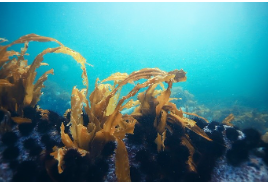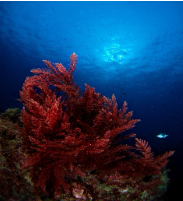Table of Contents
Algae, often referred to as nature’s unsung heroes, are a fascinating and diverse group of photosynthetic organisms that play a vital role in various ecosystems. From microscopic unicellular species to large seaweeds, algae can be found in a wide range of habitats, including oceans, freshwater bodies, and even on land.
Definition and Characteristics of Algae
Algae can be defined as a large and diverse group of eukaryotic organisms that can carry out photosynthesis. They mostly belong to the kingdom Plantae. Algae can be unicellular, colonial, or multicellular and possess chlorophyll, enabling them to convert sunlight into chemical energy through photosynthesis. Here are some key characteristics of algae:
- Photosynthetic Ability: Algae are primarily autotrophic organisms, harnessing sunlight to synthesize organic compounds through photosynthesis. They utilize chlorophyll and other pigments to capture light energy and convert carbon dioxide and water into glucose and oxygen.
- Diverse Habitats: Algae exhibit incredible adaptability and can be found in various environments, including marine, freshwater, terrestrial, and even extreme habitats such as hot springs and snowfields.
- Reproduction: Algae can reproduce both sexually and asexually. Asexual reproduction occurs through cell division, fragmentation, or spore formation, while sexual reproduction involves the fusion of gametes to produce zygotes.
- Structural Diversity: Algae display a wide range of forms, from single-celled species to complex multicellular organisms. Some algae exist as filamentous structures, while others form colonies or extensive seaweeds.
Types of Algae
Algae encompass a vast array of species, each with its unique characteristics and ecological niche. Here are some major types of algae:
Green Algae (Chlorophyta): Green algae are predominantly freshwater organisms, but they can also be found in marine and terrestrial habitats. They possess chlorophyll a and b, giving them a green color. Examples include Spirogyra, Volvox, Chlamydomonas, and Ulva.

Brown Algae (Phaeophyta): Brown algae are primarily marine organisms and can be large and complex in structure. They owe their characteristic brown color to the pigment fucoxanthin. Kelp and Sargassum are examples of brown algae.

Red Algae (Rhodophyta): Red algae are mostly marine and are known for their red pigments, including phycoerythrin. They are often found in deep waters and can form coral reefs. Examples include Polysiphonia and Corallina.

Why Blue-Green Algae is Not a True Algae?
Blue-green algae, also known as cyanobacteria, are often referred to as algae, but they are not true algae. Unlike eukaryotic algae, blue-green algae are prokaryotic organisms. They lack a true nucleus and other membrane-bound organelles found in eukaryotes. Blue-green algae have distinctive features of bacteria and are classified separately within the domain Bacteria. They are capable of photosynthesis, but their evolutionary lineage and cellular structure set them apart from true algae.
Examples of Algae
Algae can be found in various forms and habitats, making them diverse and abundant across the globe. Some notable examples of algae include:
- Chlorella: Chlorella is a green alga that is often used as a dietary supplement due to its high protein content and potential health benefits.
- Spirulina: Spirulina is a blue-green alga that has gained popularity as a nutritional supplement. It is rich in protein, vitamins, minerals, and antioxidants.
- Giant Kelp (Macrocystis pyrifera): Giant kelp is a brown alga found in temperate marine environments. It can form underwater forests, providing essential habitats for marine organisms.
Frequently Asked Questions about Algae
Are algae capable of photosynthesis?
Yes, algae are primarily photosynthetic organisms. They use chlorophyll and other pigments to capture sunlight and convert it into chemical energy through photosynthesis.
Can algae be harmful to the environment?
Some types of algae, such as harmful algal blooms (HABs), can produce toxins that can be harmful to ecosystems, marine life, and human health.
Can algae be used for biofuel production?
Yes, certain types of algae, such as microalgae, have high lipid content and can be cultivated to produce biofuels, offering a potential sustainable alternative to fossil fuels.
How do algae contribute to the ecosystem?
Algae play a crucial role in the ecosystem by providing oxygen through photosynthesis, serving as a food source for other organisms, and participating in nutrient cycling.
Can algae be used in wastewater treatment?
Yes, certain species of algae could remove pollutants and excess nutrients from wastewater, making them useful in wastewater treatment processes.






